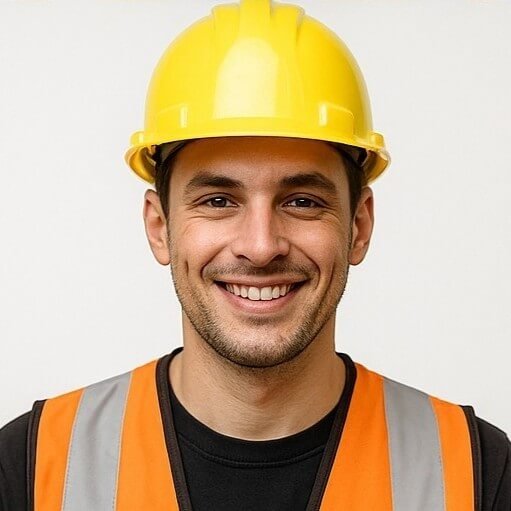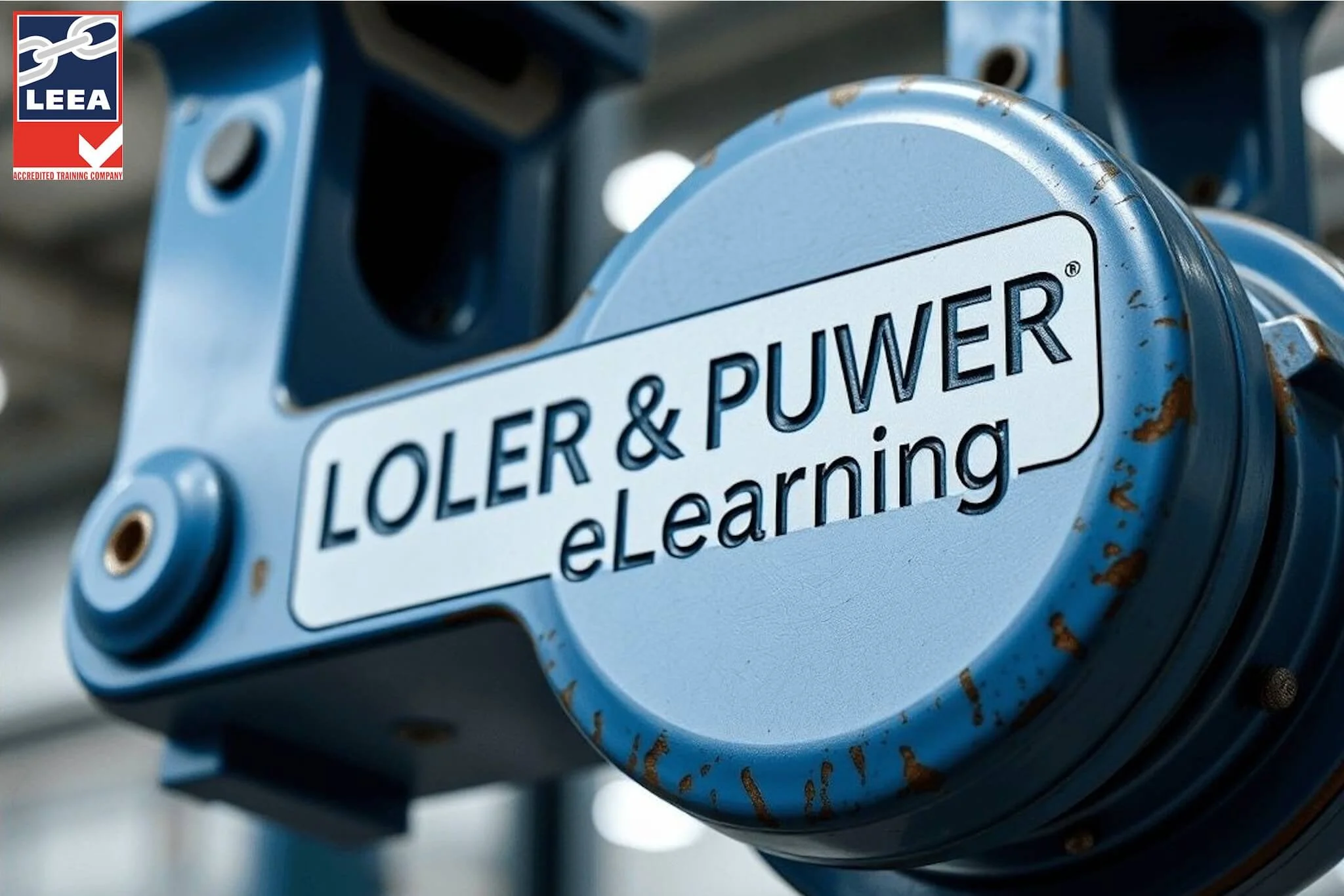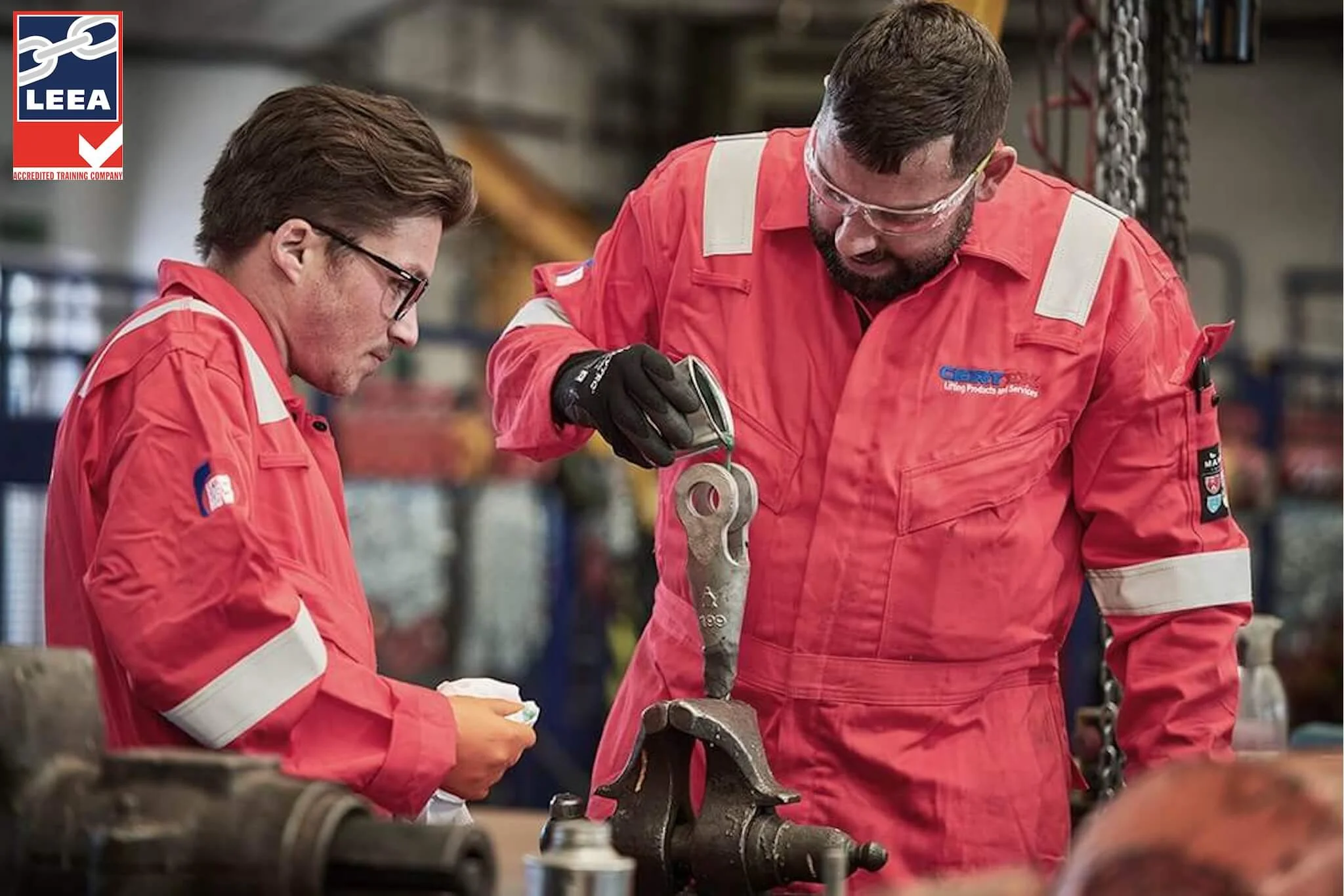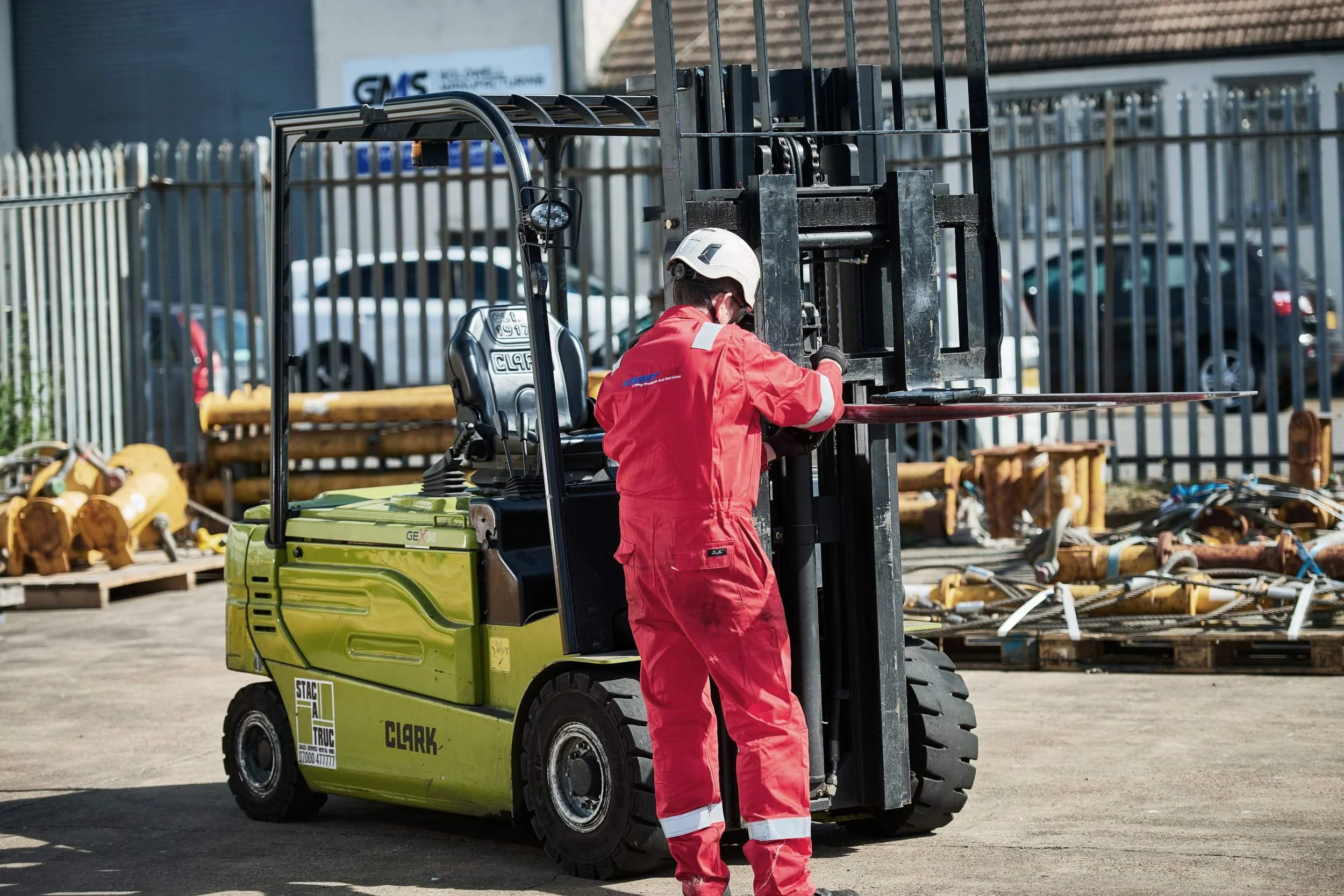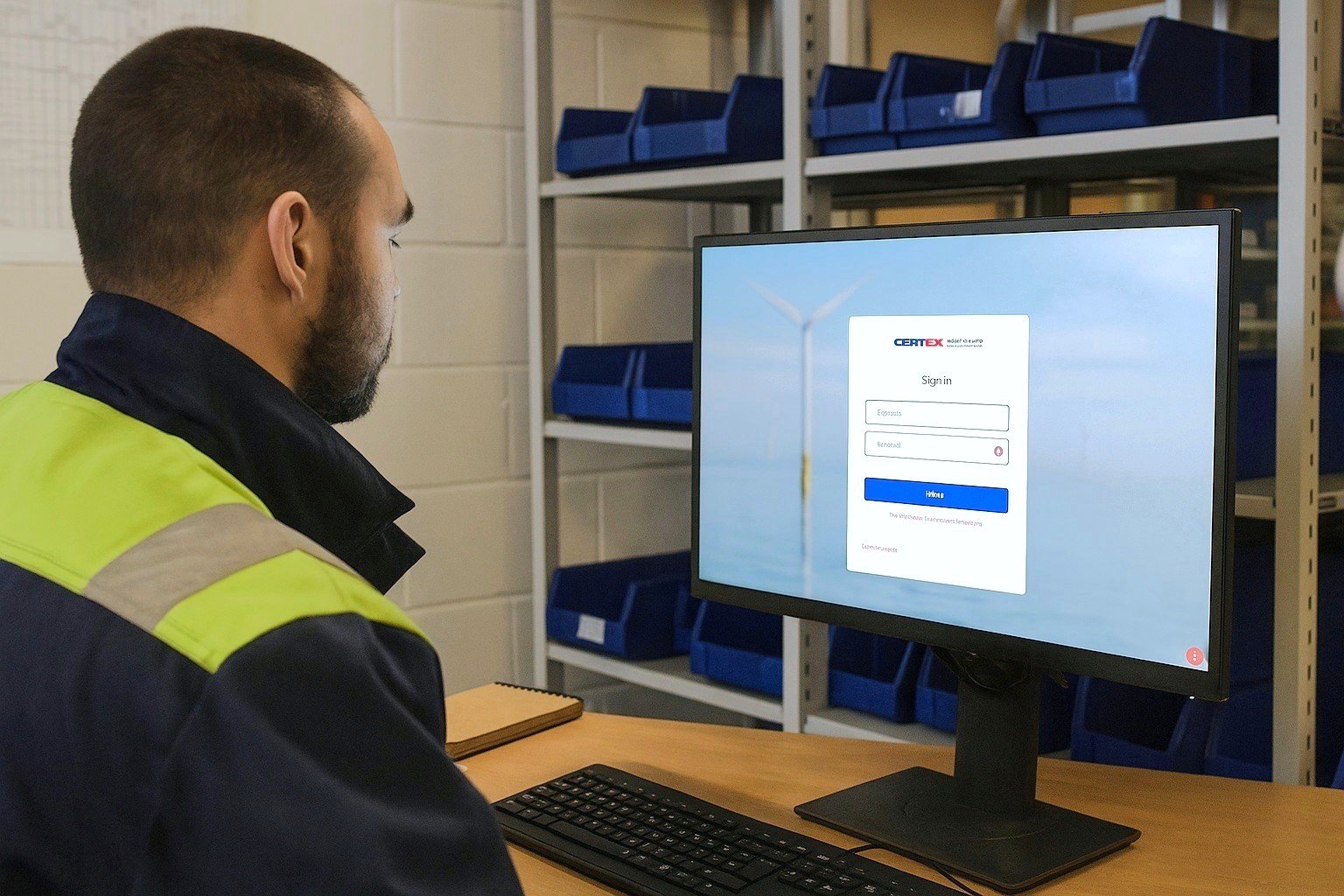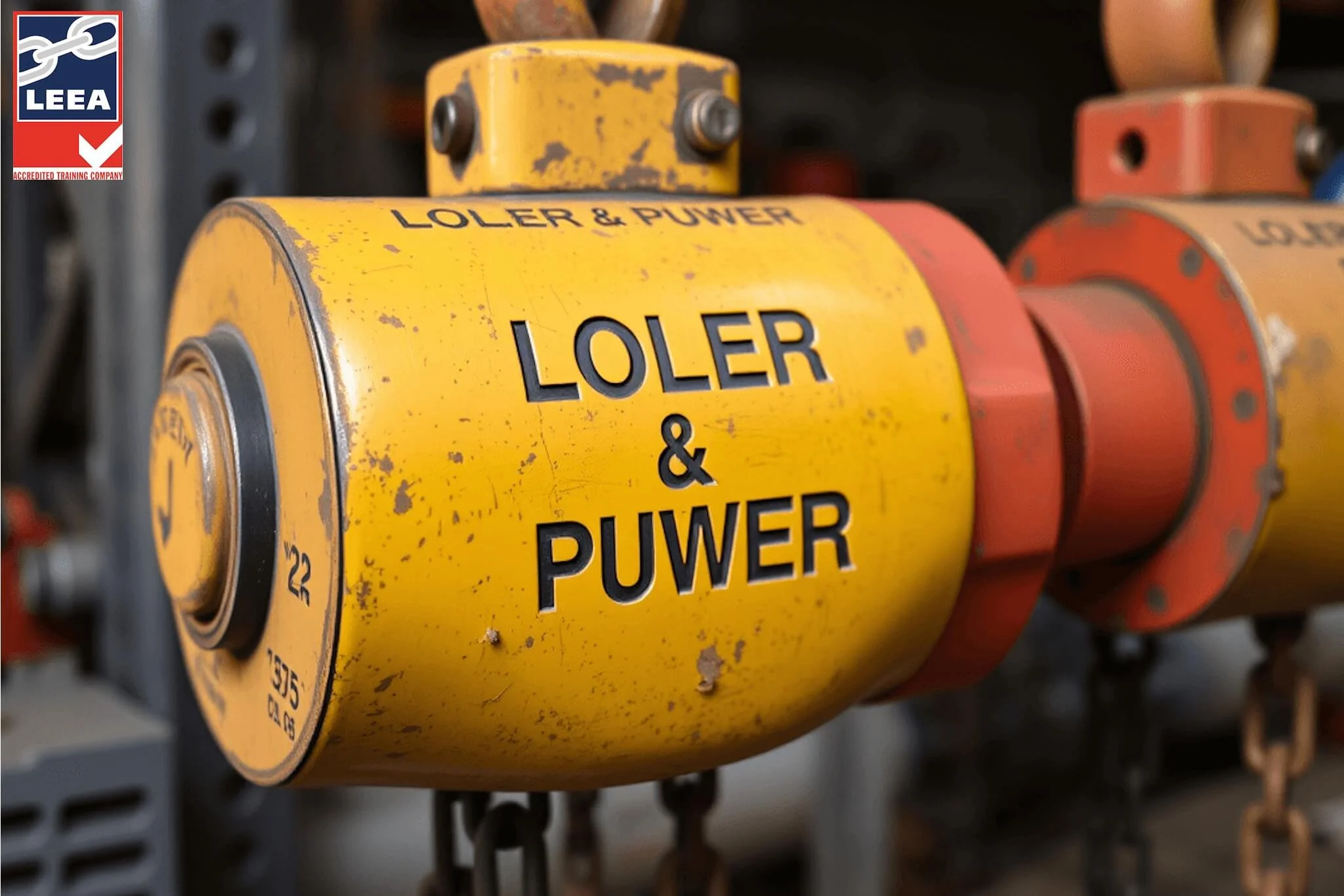Lifting & Slinging Training

This two-day LEEA-accredited course provides participants with a comprehensive understanding of slinging and lifting operations. Delivered by experienced trainers and supported by real-world insights from active industry professionals, the course covers lifting theory, equipment selection, sling configurations, load control, and relevant legislation. Course participants will develop the knowledge and awareness required to carry out lifting operations safely, confidently, and in full compliance with industry regulations and best practices.
Course Information
-
Ensure LOLER Compliance: Meet the requirements of the Lifting Operations and Lifting Equipment Regulations 1998 (LOLER) by ensuring all lifting operations are carried out safely and that equipment is fit for use.
Demonstrate Competence: Acquire the essential knowledge and practical skills needed to support competency in slinging and lifting operations, in accordance with legal requirements.
Promote a Safer Workplace: Support your legal duty as an employer by implementing safe systems of work and ensuring that personnel involved with lifting operations are properly trained and qualified.
LEEA Accredited Certification: Completing LEEA Accredited training demonstrates your company's dedication to safety, quality, and professionalism in the lifting industry.
-
Slingers and Riggers: Those with a career in lifting operations will gain essential knowledge of lifting principles, correct sling selection, and proper rigging techniques, helping them work safely and confidently on site.
Lifting Equipment Users: Operators looking to improve their understanding of safe slinging methods, appropriate equipment choices, and how sling configurations affect load security will benefit from this course.
Site Supervisors and Managers: Individuals responsible for managing lifting activities will learn how to oversee safe sling use, ensure compliance with regulations, and implement best practices to reduce risks during lifting operations.
Health and Safety Officers: Those tasked with conducting risk assessments and enforcing safety standards will develop a clearer understanding of slinging hazards, inspection criteria, and how to promote a culture of safety around lifting equipment.
Maintenance and Inspection Personnel: Personnel involved in maintaining and inspecting lifting gear will benefit from enhanced knowledge of sling types, safe configurations, and common issues, enabling better support for equipment reliability and safety.
-
Regulatory Compliance: Demonstrate a clear understanding of relevant regulations governing overhead crane operations.
Risk Awareness: Identify and assess potential hazards associated with lifting operations.
Roles and Responsibilities: Understand the duties and obligations of all personnel involved in lifting operations.
Equipment Selection: Gain knowledge of different types of lifting equipment and their appropriate applications.
Pre and Post Use Inspections: Learn how to carry out effective pre and post use checks on lifting equipment.
Lifting Terminology: Familiarise yourself with key terms and definitions related to lifting equipment.
Lift Planning: Acquire a basic understanding of the contents of a lift plan and risk assessment.
Hand Signals: Review standard hand signals used to communicate during lifting operations.
Sling Configuration: Learn various safe sling techniques for different lifting scenarios.
Load Considerations: Understand special considerations when lifting different loads, including the lifting of persons.
Load Weight Calculations: Learn how to accurately estimate the weight of loads.
Centre of Gravity Calculations: Understand how to calculate the centre of gravity for a lifting operation
Rigging: Understand proper techniques for securing loads safely.
Rigging Calculations: Understand marking of SWL, mode factors, sling leg length and angle calculations.
Safe Lifting: Gain knowledge of essential rules and factors to ensure safe lifting practices.
Load Types: Identify and differentiate between various types of loads.
-
LOLER - Lifting Equipment and Lifting Operations Regulations
PUWER - Provision and Use of Work Equipment Regulations
BS7121 - Code of Practice for the Safe use of Cranes
Health and Safety at work Act 1974
The Management of Health and Safety at Work Regulations (MHSAW) 1999
Machinery Directive 2006/42/EC
Supply of Machinery Safety Regulations
Approved Codes of Practice
British and International Standards
Harmonised European Standards
HSE Guidance
HSAW - Application Outside Great Britain
-
Legislation and Responsibilities:
Overview of key UK regulations including LOLER, PUWER, and the Health and Safety at Work Act (HASAWA)
Roles and legal responsibilities of the slinger/signaller
The importance of effective communication within lifting teams
Lifting Equipment Fundamentals:
Identification and use of common lifting accessories: chains, slings, shackles, eyebolts, etc.
Safe selection and application of lifting equipment
Conducting pre-use inspections and recognising defects
Understanding equipment markings, certification, and traceability
Load Handling Techniques:
Application of slinging methods: choke, basket, and direct
Estimating load weight and identifying the centre of gravity
Correct techniques for attaching and detaching loads
Use of taglines and maintaining load stability
Considerations for securing and balancing loads safely
Signalling and Communication:
Standard hand signals and radio communication protocols
Role and responsibilities of the signaller during crane operations
Establishing and maintaining clear communication with crane operators
Practical Skills Development:
Hands-on slinging and signalling exercises
Delivering accurate and effective hand signals
Safely preparing, lifting, and landing loads
Practical assessment to verify operational competence
Risk Assessment and Safety Procedures:
Identifying hazards and implementing control measures
Conducting dynamic risk assessments on-site
Site-specific safety procedures and establishing exclusion zones
Assessment and Certification:
Written or multiple-choice theory examination
Practical assessment of slinging and signalling proficiency
LEEA-accredited certification awarded upon successful completion
Course Content
To view the full course content please download the Course Information Sheet.
-
Each participant must pass a theory assessment to demonstrate a solid understanding of the course content.
Additionally, each course participant must complete a practical assessment of a lifting operation.
-
There are no prerequisites to attend this course.
-
Contact Hours Inclusive of Breaks: 14
Total Days: 2
Course Timing: 9am - 4pm (End times can vary depending on course participant numbers and experience).
Arrival Time: Course participants should arrive at 8.45am prompt.
-
Please ensure you wear safety boots when attending this training course.
For those attending training at the Certex Training Academy, all other Personal Protective Equipment (PPE) will be provided. However, you are welcome to bring your own PPE if you prefer.
If the training is being conducted at your company's site, please consult your employer regarding the specific PPE requirements in accordance with your company's site safety policy.
For a detailed list of PPE used during this training, please download the Course Information Sheet.
-
Location: Certex Training Academy
Minimum: 1
Maximum: 8
Location: Customer site
Minimum: 6 (Less people may attend but this is the minimum number of people we charge for to attend your own company premises).
Maximum: 8
-
LEEA Accredited: Three Years
-
ID
Each participant is required to produce photographic ID on the first day of the course. Failure to do so will result in the participant being unable to participate.
Acceptable Forms of ID:
Photo Driving Licence
Passport
PPE
Please ensure you wear safety boots when attending this training course.
For those attending training at the Certex Training Academy, all other Personal Protective Equipment (PPE) will be provided. However, you are welcome to bring your own PPE if you prefer.
If the training is being conducted at your company's site, please consult your employer regarding the specific PPE requirements in accordance with your company's site safety policy.
CITB Levy registered? Save up to 70% on Certex training. Click here to learn more.
Do You Have Bespoke Requirements?
Testimonials
We Asked Our Course Participants: “What Did You Find Most Valuable or Enjoyable About This Training Course.”
“The experiences and knowledge of the Trainer was very helpful in this course.”
“The Trainer was knowledgeable and engaging.”
“The Trainer answered all questions clearly and in great detail.”
Scroll Our Full Range of Training Courses
Your feedback matters!
Leave a review today


